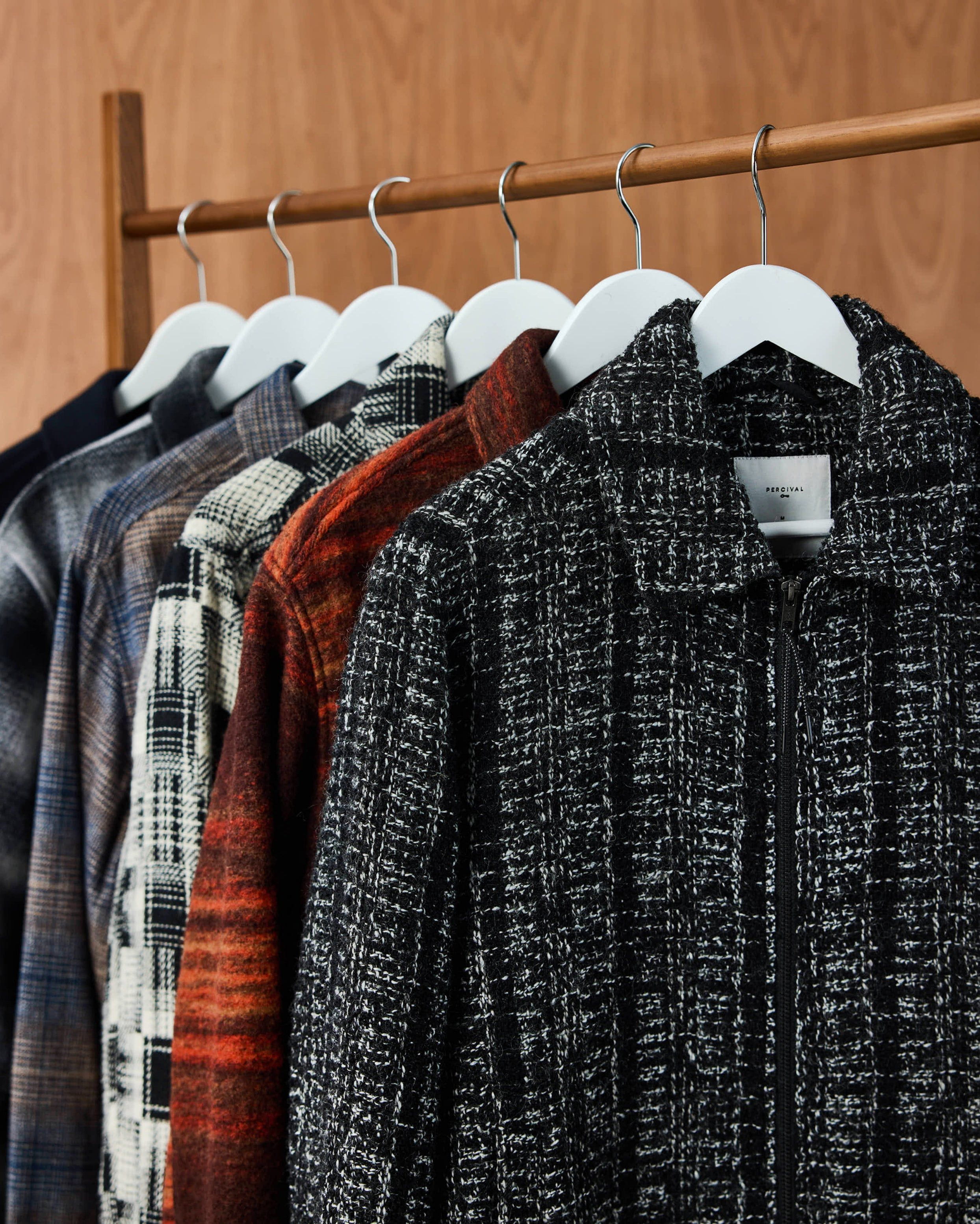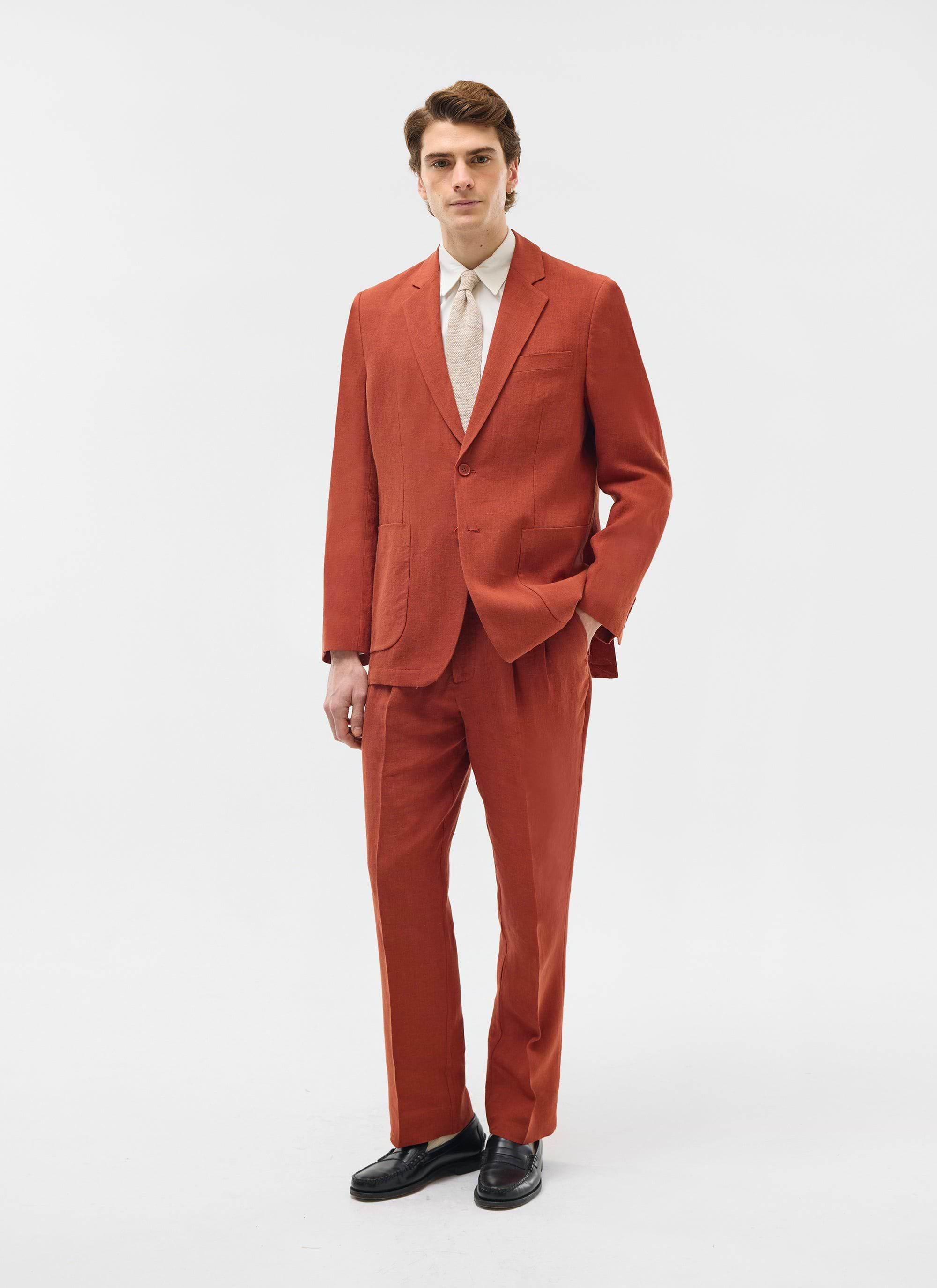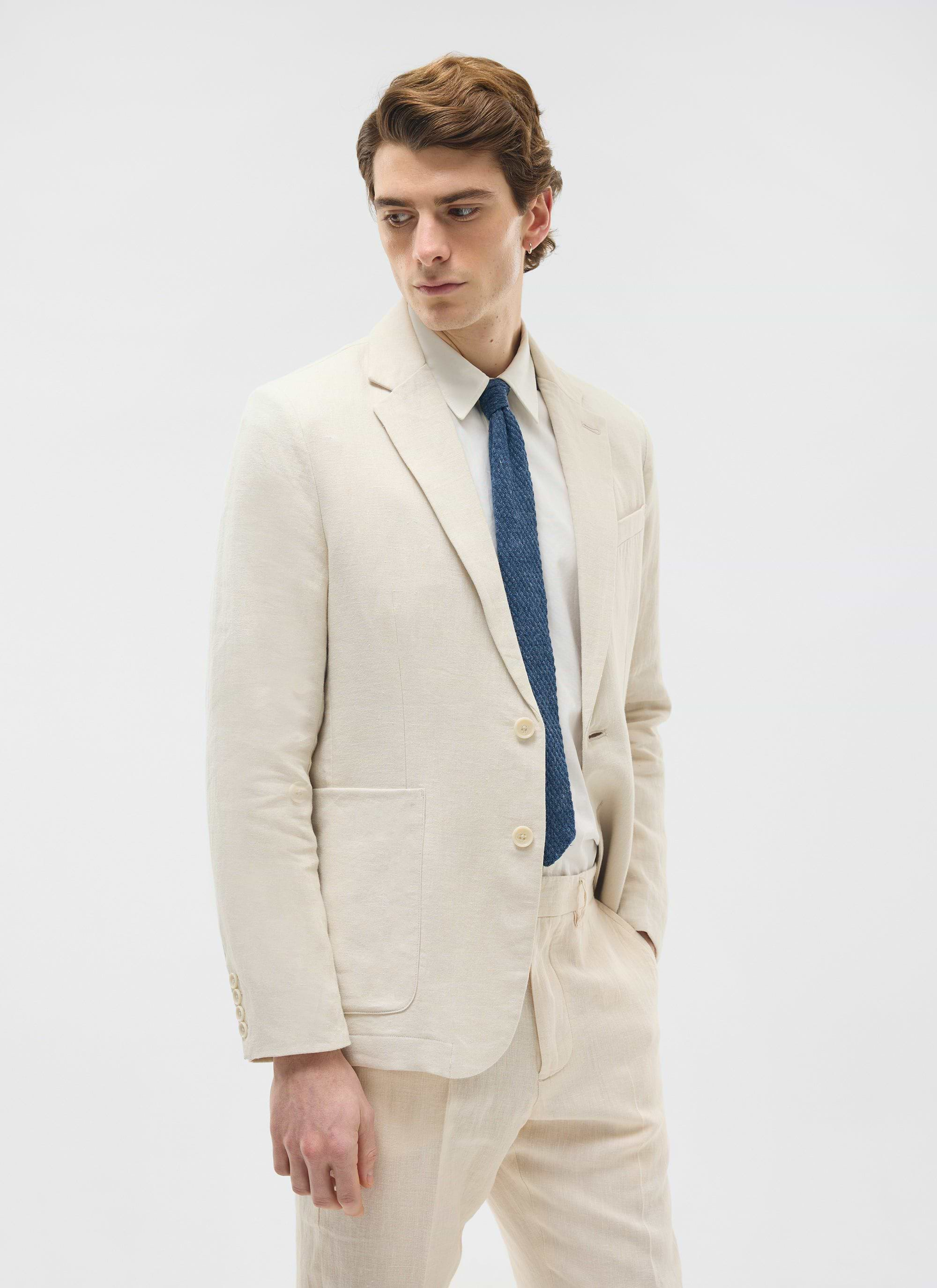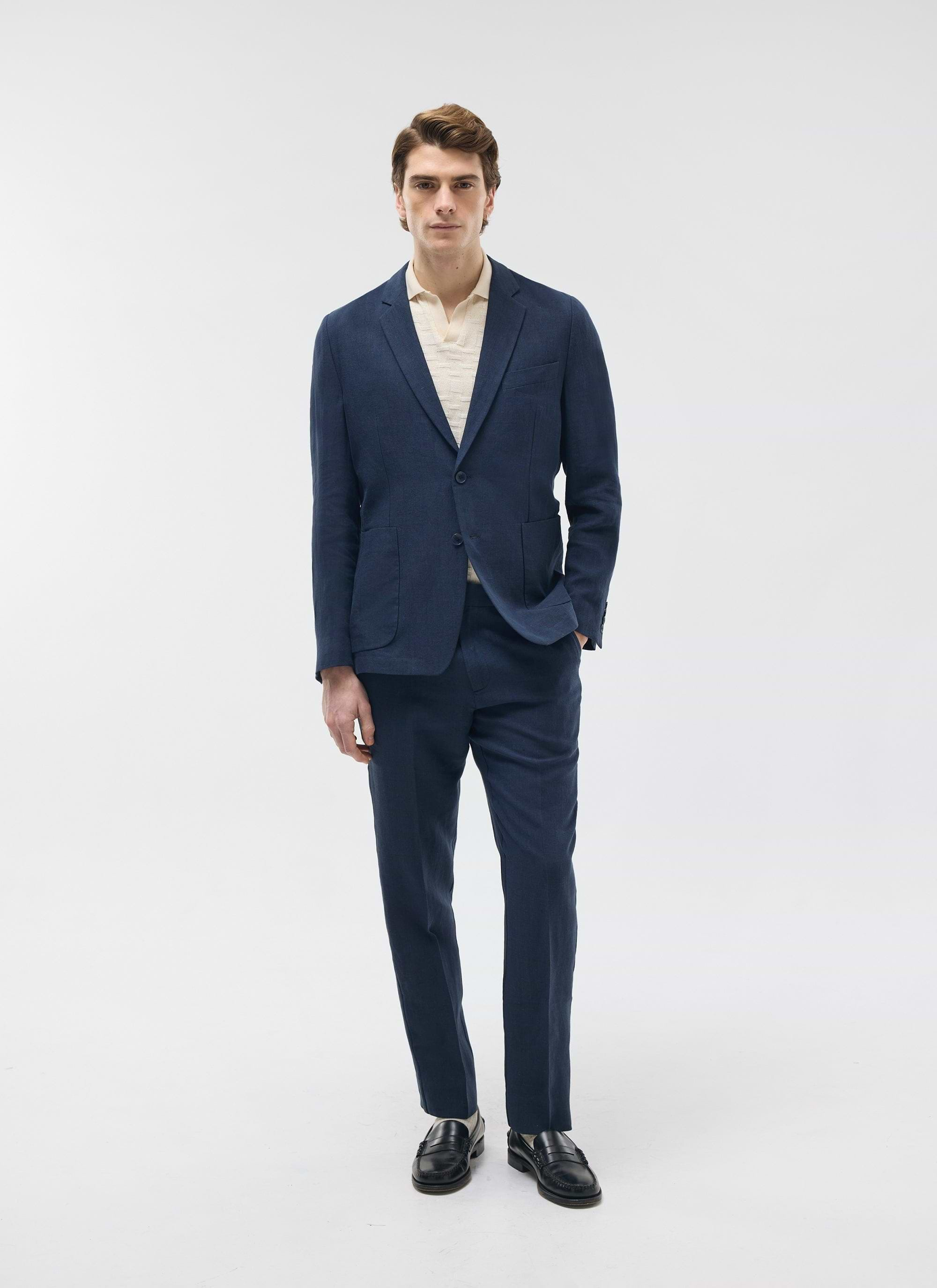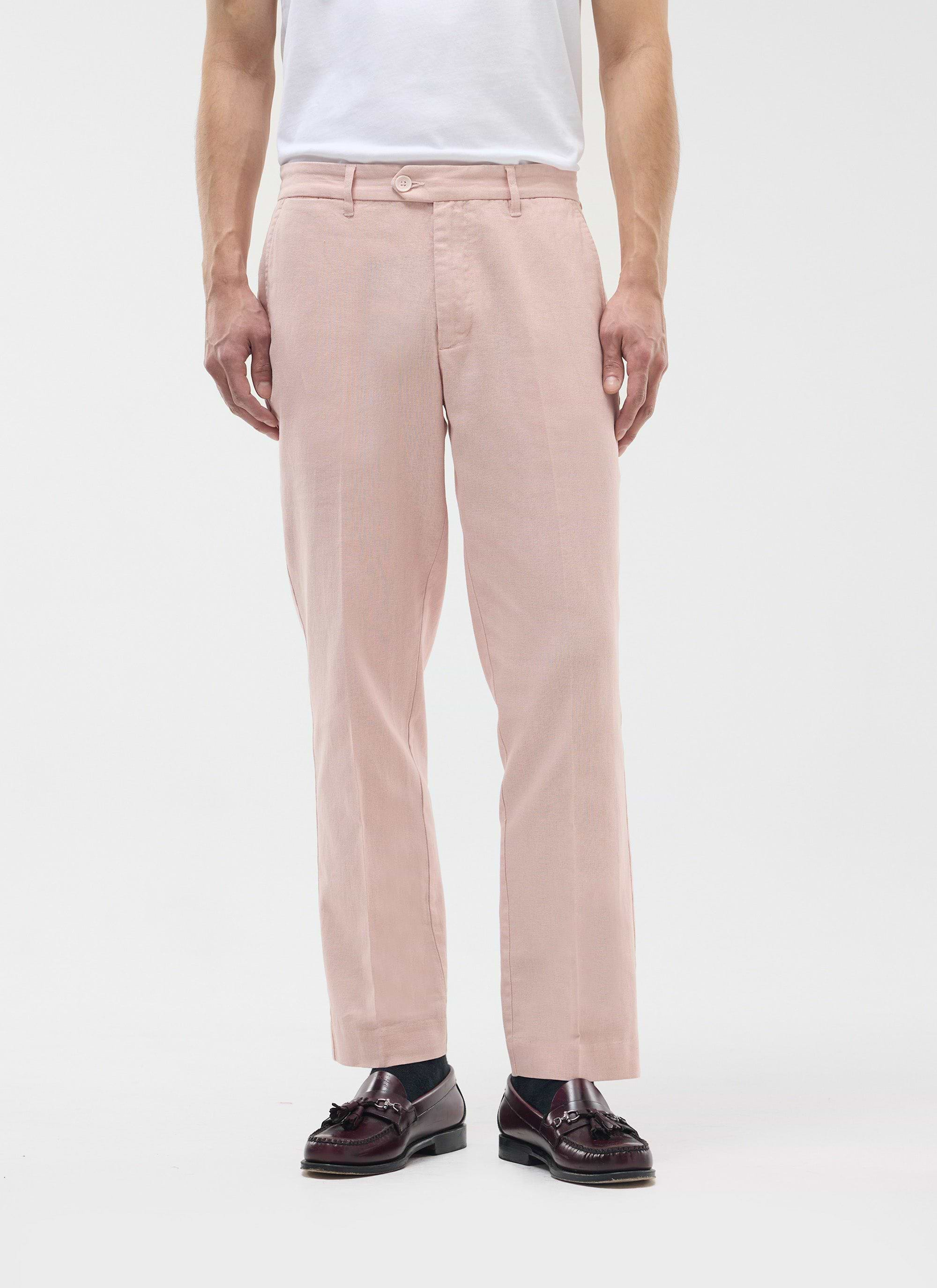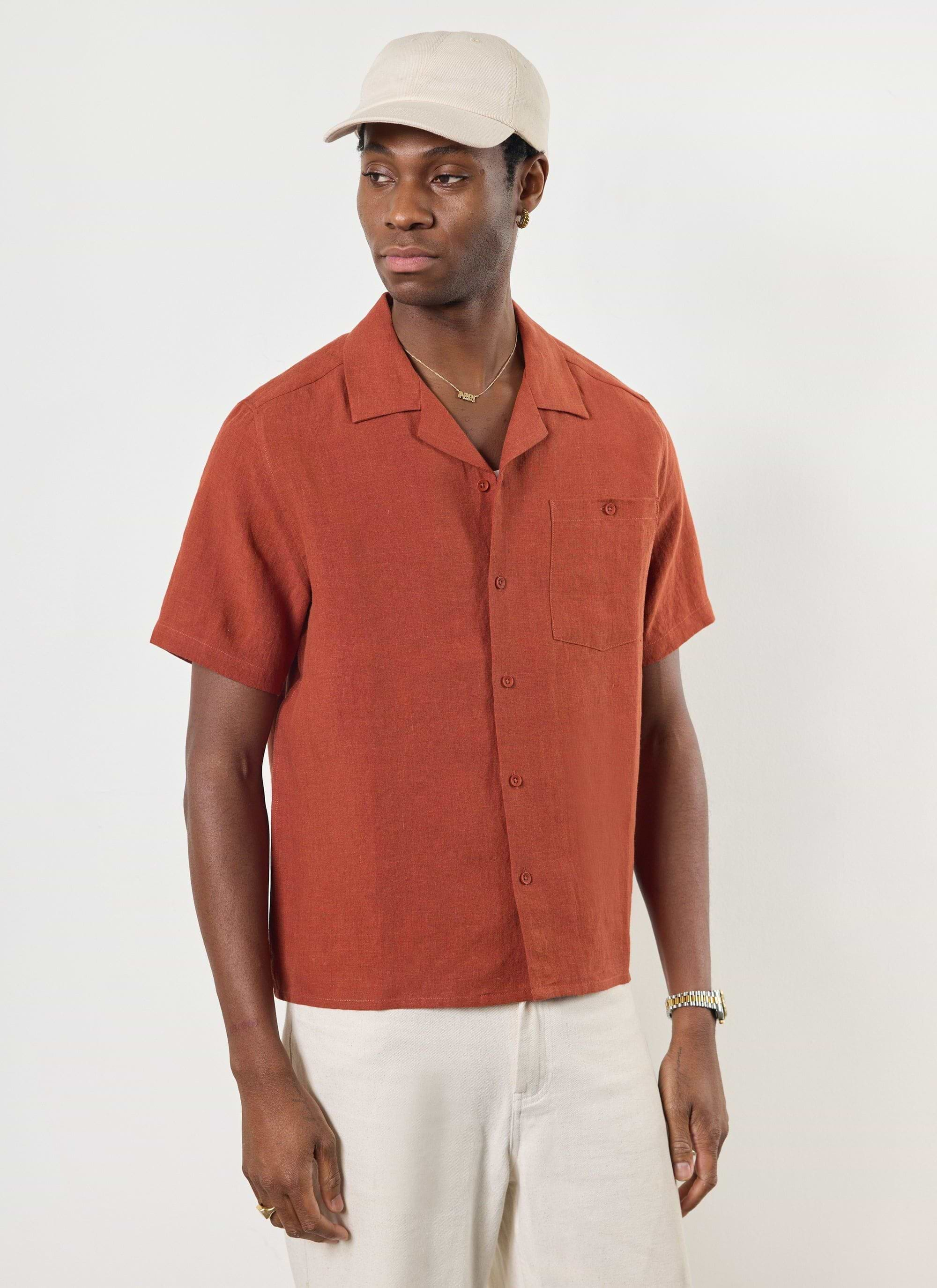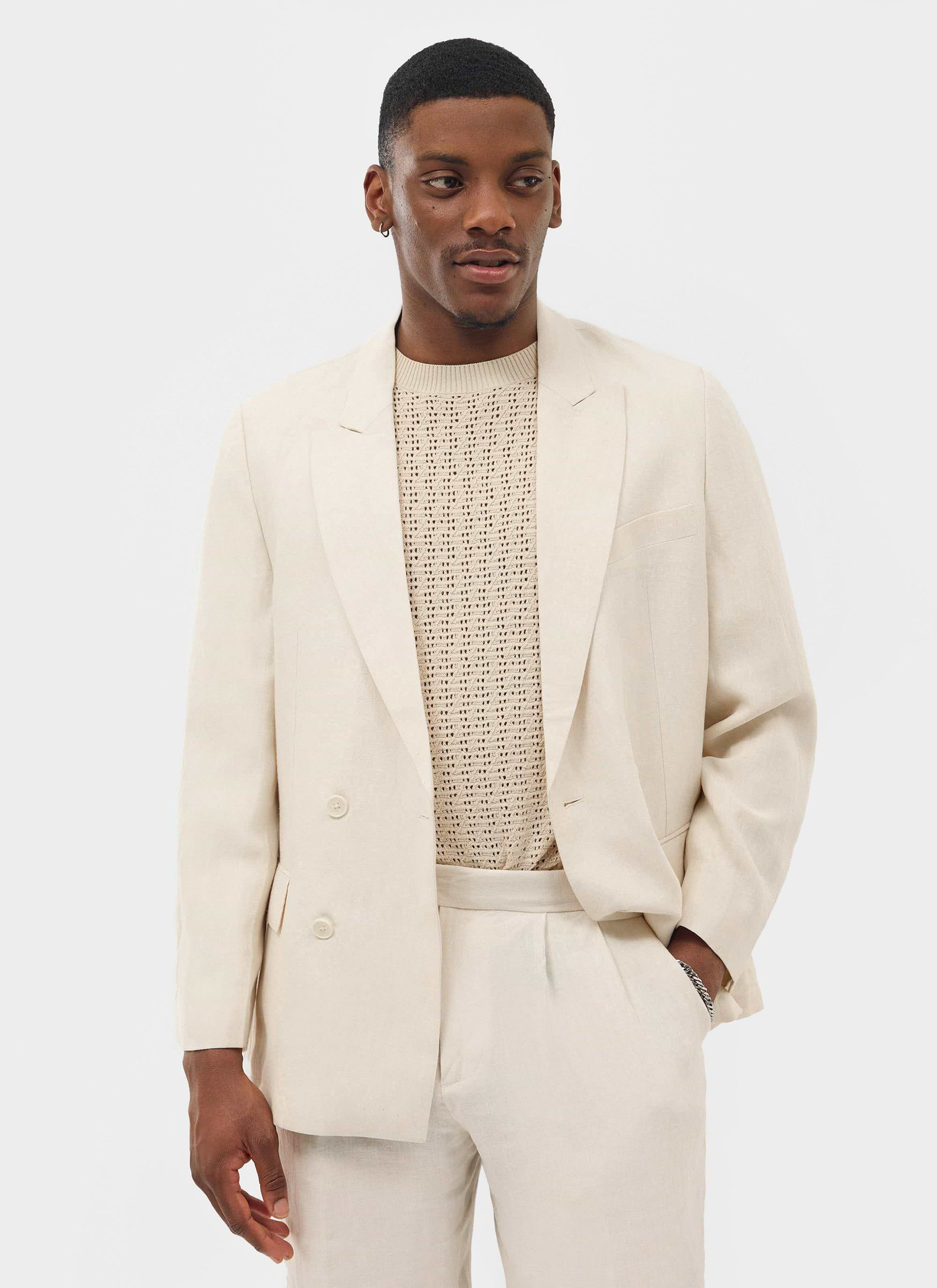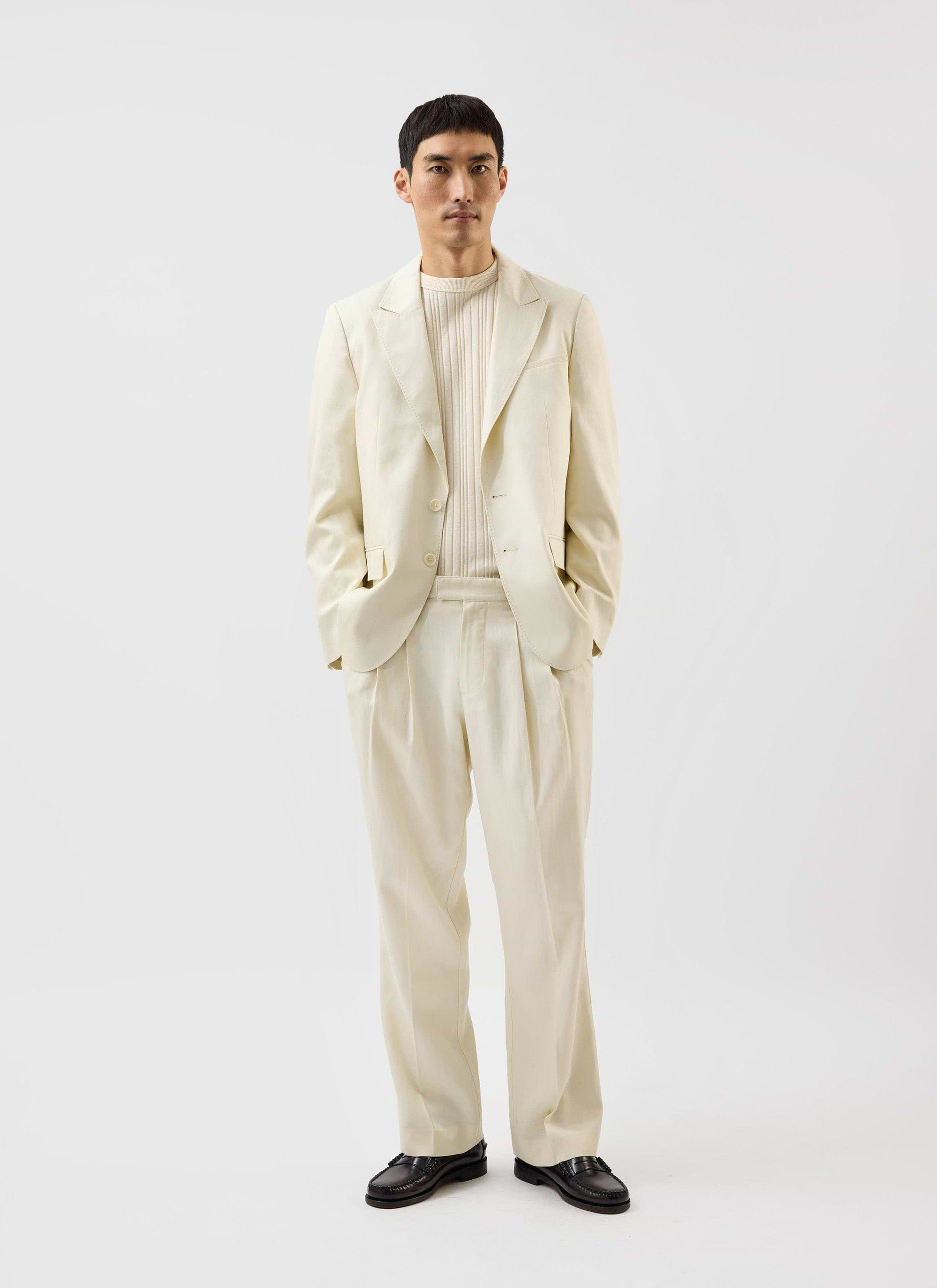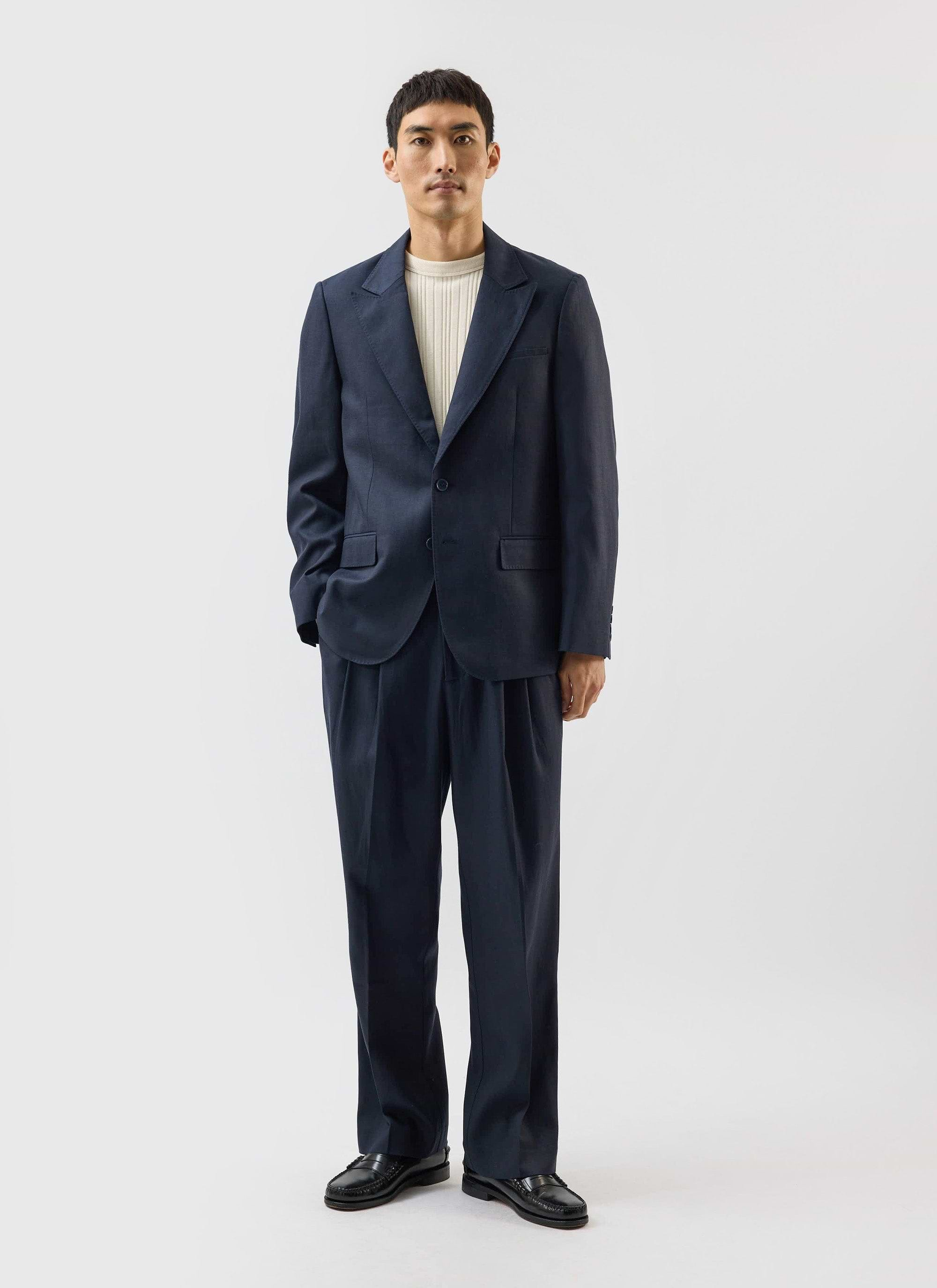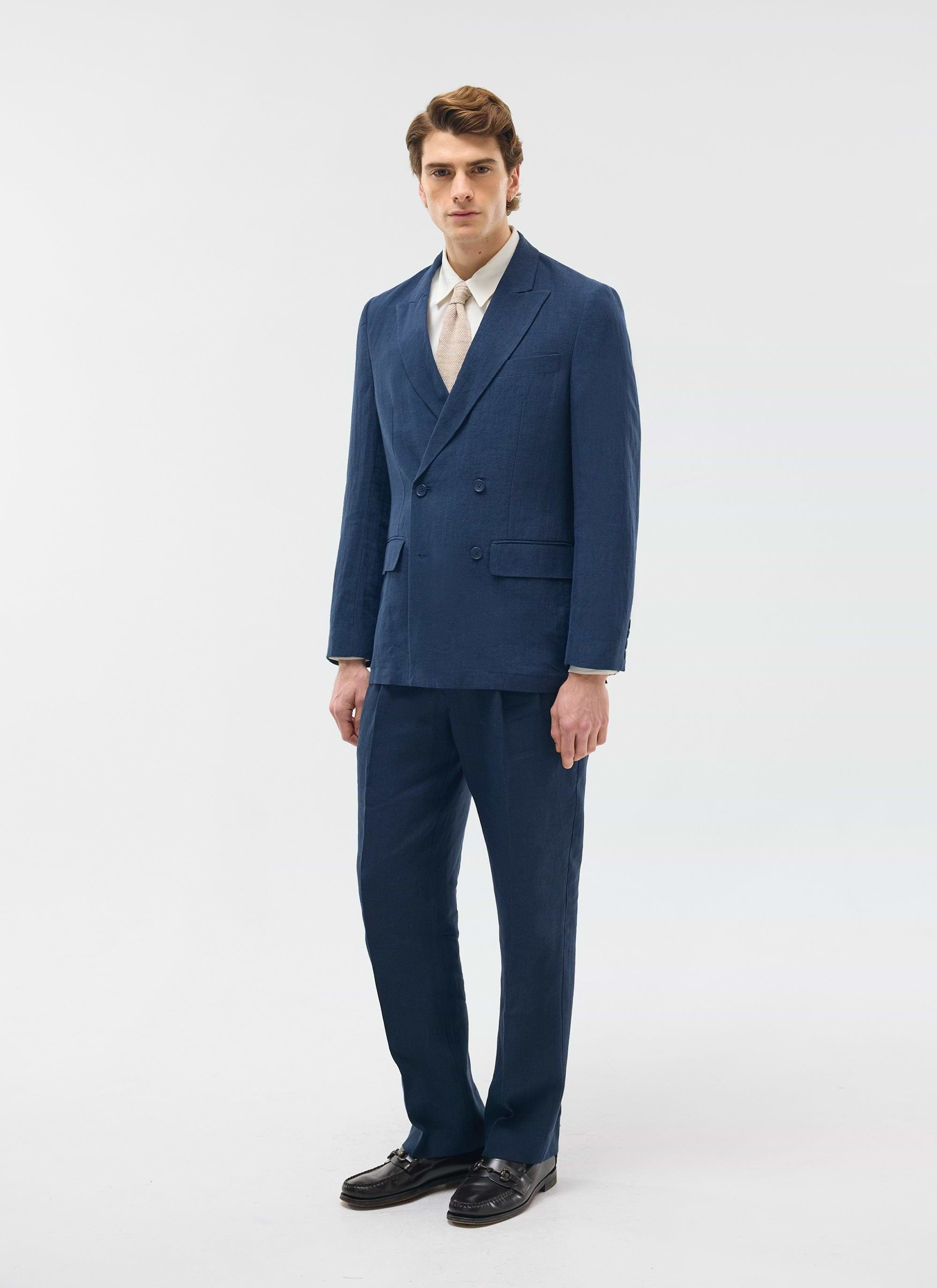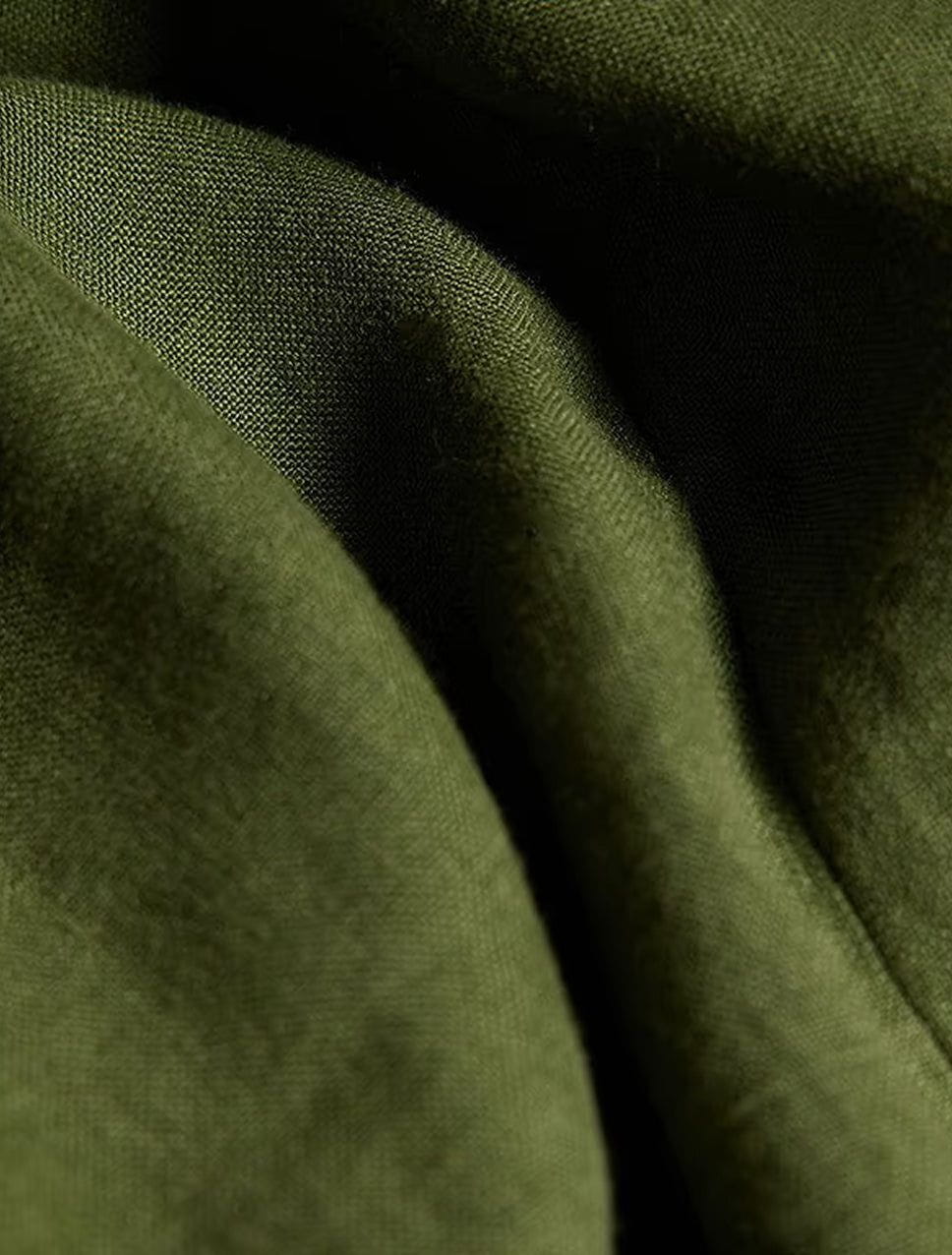
What is Linen? An Overview & History of Linen Fabric
Linen: humanity’s original air-con. Spun from flax, older than history books, and still the coolest thing you can wear without actually owning a yacht.
What is linen, and where does it come from?
The Origins of Linen: from flax to fabric
What’s linen, then? Let’s start with the real basics — linen is a fabric used for all sorts of purposes, chiefly household items and high-end clothes. It’s made from the inner bark of the flax plant via a fairly strenuous process (more on that shortly), and is thought to have originated in Ancient Mesopotamia—the cradle of many modern civilisations—almost 10,000 (ten-thousand) years ago. TEN-THOUSAND YEARS AGO. Do you know what else they were inventing in Mesopotamia 10,000 years ago? The wheel, mathematics, astronomy, the planting of cereal crops to support growing populations, cursive writing… they weren’t messing about, the Mesopotamians. It took another 9,000 years or so for humankind to put the wheel and flax together to mechanise linen production but, listen, sometimes an idea just needs to sit in the collective consciousness for a while before it comes to fruition.
We should note that there have been reports of evidence of linen usage in a Georgian cave called Dzudzuana, which dates back 36,000 years. At the time of writing, however, this is yet to be confirmed. Imagine that, though. There were only around 50,000 humans living in the whole of Europe at the time, and neanderthals had only died out a few thousand years earlier. It boggles the mind that a presumably tiny population of people in a cave in Georgia could make such an advancement in textiles. As we say, though — to be confirmed.
How is linen made?
Right, stick with us here because things are about to get nitty gritty.
First, you identify and harvest a flax plant. So far, so good. Then you’re going to want to soak that flax for a while in order to soften the woody bits on the outside of the stem. You’ve got options here — you can leave them in a tub or a stream, in which case we’re talking a few days of soaking; or you can leave the flax to lie in a dew-soaked field for a few weeks. Up to you. This soaking process is called retting and is delicate, as retting the flax for too long can destroy those inner bark fibres that we’re after. Those inner bark fibres, by the way, they’re called bast fibres.
Next, you need to dry your flax. Once your flax is lovely and moisture-free, you’re gonna break up the inner core of the plant (a.k.a. the boon) using a flax breaker, which looks sort of like a wooden guillotine, minus the blades. Vive la révolution, vive le linen. This helps to separate the boon from the bast (which is a phrase we’re going to be adopting in the office from this moment onward).
Once your flax is broken, it’s time to get your knife out and start scraping. Scraping off the roots, and any excess blossom so you’re left with just your loosened boon and bast. Now you’re ready to feed the stem through a set of spikes called a hackle. Now you’ve got your bast fibres, and if you keep hackling you’ll end up with short fibres called tow, and long fibres which are better for clothes. Take those long fibres, spin them like you would with most fabrics, and you’ve got yourself some linen. Easy.
Linen’s Significance in History and Menswear
Initially, linen was most often used for making undergarments. Linen had a different standing in the early civilisations that embraced it, however. In Mesopotamia linen garments were reserved for the ruling classes – they would have been seen as a luxury. In Ancient Egypt, though, linen was for everyone. Egypt was, and is, properly hot. Therefore it would have been a great comfort to the people of Egypt to be able to wear clothes that kept them cool — keeping out the sun whilst wicking moisture and allowing airflow over the skin. In fact, Ancient Egyptians even used linen as currency, such was its importance to society. Mummies were wrapped in linen, including Tutankhamun himself — another example of its cultural significance to the Egyptians.
Linen was also important to American colonists. Ironically, considering the havoc that was being wrought upon the Native Americans at the time, the colonists were desperate to prove their self-sufficiency, especially as British goods were being boycotted in the years leading to the Revolutionary War. Planting flax and manufacturing their own linen on their own plots of land was a good way to do this, so many colonists made their own clothes using linen as a show of defiance against the British.
Linen remained massively important in most societies until 1793 and the invention of the cotton gin alongside the horrific slavery used to work cotton fields, making cotton extremely cheap to manufacture in comparison. Suddenly cotton became much easier and cheaper to manufacture, and linen began to fall out of favour in many cultures. Mechanical spinning of linen did become possible in the 1830s but, by this point, linen manufacturing had already fallen well behind cotton and never truly caught up again in terms of popularity or quantity. Belfast, known as Linenopolis in the 1700s, became just Belfast again in the public consciousness, and cotton became king.
Entering the world of fashion
Linen has dipped its absorbent and quick-drying toes in and out of fashion since its inception. It’s always difficult to pinpoint exact moments that lead to certain styles or materials being en vogue, but we can have a good crack at it in the case of linen.
Some fun etymology for you here: When linen first made its way to Europe, it was popular as an underlayer for a thicker outer layer, or as actual underwear. It’s from this usage that we get the words lingerie and lining in terms of clothing. Linen, lingerie, lining. It can’t be proven, but this is quite possibly why white is still a popular colour choice for underwear to this day (as linen was all white/natural in colour at the time).
More recently, there have been several moments in film that have escalated linen’s popularity in the world of fashion. George Lazenby’s only foray into Bondage in 1969’s On Her Majesty’s Secret Service, saw him wearing the utter hell out of a natural linen suit, entering the public consciousness in the process, and bringing linen back to the world of formal and smart clothing, where it belongs. The next massive milestone on linen’s menswear fashion journey came with Miami Vice in 1984 — that Florida heat absolutely no match for the rolled up sleeves of Sonny Crockett’s linen blazer, a man truly mastering his environment with ease and panache. In the year 2013 of the Gregorian calendar, Baz Luhrmann saw fit to adapt The Great Gatsby into a film featuring music by Lana Del Rey, The xx, and half of The Black Eyed Peas. Which is insane. That’s an insane thing to do. But the film saw Leonardo Di Caprio donning a beautiful linen suit, perfect for those hazy summer nights on West Egg. These cultural moments combined with a generally more favourable attitude toward Mediterranean style and culture have led to linen being right back in the mainstream and a perfect summer option for all occasions. If you’re comfortable, you’re confident, and confidence never goes out of fashion.
The Fabric’s Strength and Unique Qualities
This is where linen really does a number on other fabrics. There’s a reason it’s stuck around so long, chief amongst them being that it offers qualities no other fabric can hold a candle to. Due to the naturally hollow bast fibres used to create linen, it’s far more absorbent and quick-drying than most fabrics used in the manufacture of clothes, natural or otherwise. It wicks moisture from the skin and is super breathable, making it a naturally occurring perfect fabric for warm weather clothes. The Earth tends to provide everything we need if we just look hard enough.
Eco-friendly & sustainable
You may have noticed, during our little explainer on how linen is actually made, there were no mentions of irrigation or chemical treatment. That’s because you don’t need them to manufacture linen. This makes it a much more sustainable product than cotton. Aside from that, linen is biodegradable (unless its preserved from the elements in a Georgian cave for 36,000 years, and every single part of the plant is used, be that be for food in the form of seeds, oil in the form of linseed oil, or by-products such as chipboard, paper, and building materials. As the world becomes more and more eco-aware, this is a huge plus for linen (and the future of the planet).
Lightweight & Durable
One of the good things about linen is that it weighs next to nothing. When you take it off, you have to anchor it to your wardrobe or it floats away [citation needed]. Those hollow fibres that make linen so absorbent and quick-drying also mean it’s feather light despite being strong and durable. So strong and durable, in fact, that it was often used to make ships’ sails and ropes throughout history. When it gets wet, it gets stronger, like a mogwai from Gremlins. Well, sort of like a mogwai. Pretty sure they spawn more mogwai if you get them wet. Linen doesn’t do that. Regardless, you don’t have to worry about catching a splash of refreshing sea-spray when you’re strolling the beach in your fresh linens — it’s only going to make them stronger, briefly.
What is linen used for in clothing?
We’ve discussed uses of linen throughout history; deployed at the frontline of crotch comfort, reserved for the Mesopotamian bourgeoisie, wrapping the preserved cadavers of Egyptian pharaohs etc. These days linen really shines in hot weather styles. A linen suit is ideal for a summer wedding or birthday drinks, whilst you can’t go wrong with an airy pair of linen shorts for a summer holiday. Linen clothes are more diverse now than they’ve ever been. Our Everyday Linen Trousers are versatile and a summer staple, whilst a Linen Blazer can add a sense of effortless style to just about any fit. Linen can be boxy in nature, which we personally love for casual wear, but this can be counteracted by plumping for a Linen Tailored Suit, which will hold more shape and complement your build for more formal occasions.
Linen Clothes: A Timeless Fabric
The Copa Mundial football boot, designed by adidas, has been around since 1979 (although it was designed for the 1982 World Cup). It’s still around to this day, and it’s been the world’s best-selling football boot for the past 22 years and counting. It’s the best-selling boot because it was near-perfect at its original inception, and it’s stayed that way for the last 44 years. If it ain’t broke, don’t fix it. Linen has been around for at least 10,000 years and it’s still going strong. It’s got at least 9,900 years on the Copa Mundial. What we’re trying to say is: Linen was one of the very first fabrics used to make clothes after animal skins, and sometimes you just happen upon the best solution straight away. It’s nice when that happens, and you shouldn’t fight it.

